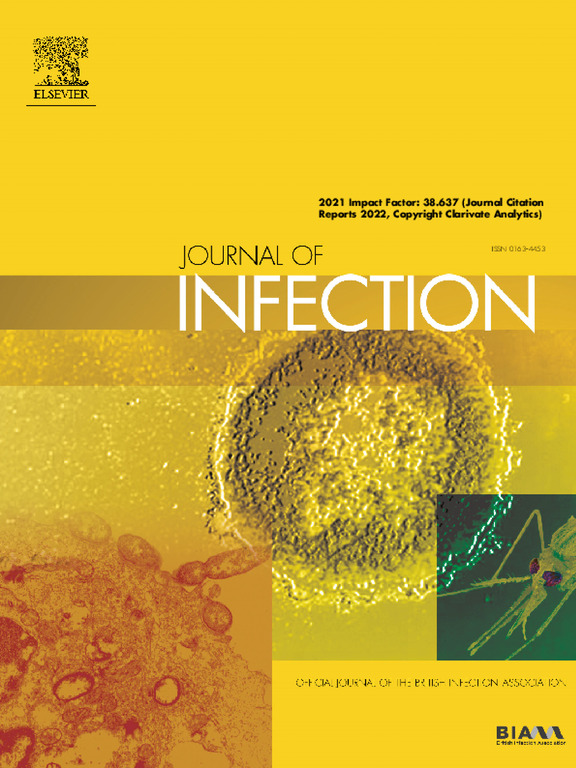Epidemiology of Neisseria gonorrhoeae in South-East Asia: Systematic review, meta-analyses, and meta-regressions
IF 11.9
1区 医学
Q1 INFECTIOUS DISEASES
引用次数: 0
Abstract
Objectives
The epidemiology of Neisseria gonorrhoeae (NG) infection in South-East Asia remains inadequately understood. This study aimed to systematically review and analyze the available evidence on NG prevalence to provide an understanding of the epidemiology in this region, highlighting prevalence patterns, key populations at risk, and factors influencing transmission.
Methods
A systematic review of the literature up to September 3, 2024, was conducted, with findings reported in accordance with PRISMA guidelines. Random-effects meta-analyses were performed to estimate the pooled mean prevalence, while meta-regression analyses were conducted to explore associations, assess time trends, and identify sources of heterogeneity across studies.
Results
The review identified 474 relevant publications, encompassing 885 overall and 1136 stratified NG prevalence measures. The pooled mean prevalence of urogenital infection was 0.5% (95% CI: 0.3–0.8%) in general populations, 13.9% (95% CI: 11.9–16.1%) among female sex workers, 16.8% (95% CI: 12.6–21.5%) among sexually transmitted infection clinic attendees, 4.6% (95% CI: 2.9–6.5%) in symptomatic women, and 38.5% (95% CI: 31.8–45.3%) in symptomatic men. Among men who have sex with men, transgender people, and male and transgender sex workers, the pooled mean prevalence was 0.9% (95% CI: 0.4–1.5%) for urogenital infection, 12.0% (95% CI: 8.8–15.7%) for anorectal infection, and 7.1% (95% CI: 4.0–10.9%) for oropharyngeal infection. Multivariable meta-regression analyses explained over 55% of the variation in prevalence, revealing a hierarchical pattern by population type, higher prevalence among men, and a decline in prevalence of 2% per calendar year over the past four decades.
Conclusions
NG prevalence in South-East Asia is comparable to the global prevalence. The markedly high prevalence among key populations, coupled with Asia’s substantial burden of gonococcal antimicrobial resistance, underscores the urgent need for targeted interventions focused on these vulnerable groups.
东南亚淋病奈瑟菌的流行病学:系统回顾、荟萃分析和荟萃回归。
目的:东南亚淋病奈瑟菌(NG)感染的流行病学仍不充分了解。本研究旨在系统回顾和分析有关NG流行的现有证据,以了解该地区的流行病学,突出流行模式、关键危险人群和影响传播的因素。方法:对截至2024年9月3日的文献进行系统综述,并根据PRISMA指南报告研究结果。随机效应荟萃分析用于估计合并平均患病率,而荟萃回归分析用于探索关联,评估时间趋势,并确定研究间异质性的来源。结果:该综述确定了474篇相关出版物,包括885篇总体和1136篇分层NG患病率测量。泌尿生殖系统感染的总平均患病率在一般人群中为0.5% (95% CI: 0.3-0.8%),在女性性工作者中为13.9% (95% CI: 11.9-16.1%),在性传播感染临床参与者中为16.8% (95% CI: 12.6-21.5%),有症状的女性中为4.6% (95% CI: 2.9-6.5%),有症状的男性中为38.5% (95% CI: 31.8-45.3%)。在男男性行为者、变性人以及男性和变性性工作者中,泌尿生殖道感染的总平均患病率为0.9% (95% CI: 0.4-1.5%),肛肠感染的总平均患病率为12.0% (95% CI: 8.8-15.7%),口咽感染的总平均患病率为7.1% (95% CI: 4.0-10.9%)。多变量荟萃回归分析解释了55%以上的患病率差异,揭示了按人口类型划分的分层模式,男性患病率较高,在过去40年里,患病率以每年2%的速度下降。结论:东南亚的NG患病率与全球患病率相当。关键人群的患病率明显高企,加上亚洲对淋球菌抗微生物药物耐药性的沉重负担,突显出迫切需要针对这些弱势群体采取有针对性的干预措施。
本文章由计算机程序翻译,如有差异,请以英文原文为准。
求助全文
约1分钟内获得全文
求助全文
来源期刊

Journal of Infection
医学-传染病学
CiteScore
45.90
自引率
3.20%
发文量
475
审稿时长
16 days
期刊介绍:
The Journal of Infection publishes original papers on all aspects of infection - clinical, microbiological and epidemiological. The Journal seeks to bring together knowledge from all specialties involved in infection research and clinical practice, and present the best work in the ever-changing field of infection.
Each issue brings you Editorials that describe current or controversial topics of interest, high quality Reviews to keep you in touch with the latest developments in specific fields of interest, an Epidemiology section reporting studies in the hospital and the general community, and a lively correspondence section.
 求助内容:
求助内容: 应助结果提醒方式:
应助结果提醒方式:


